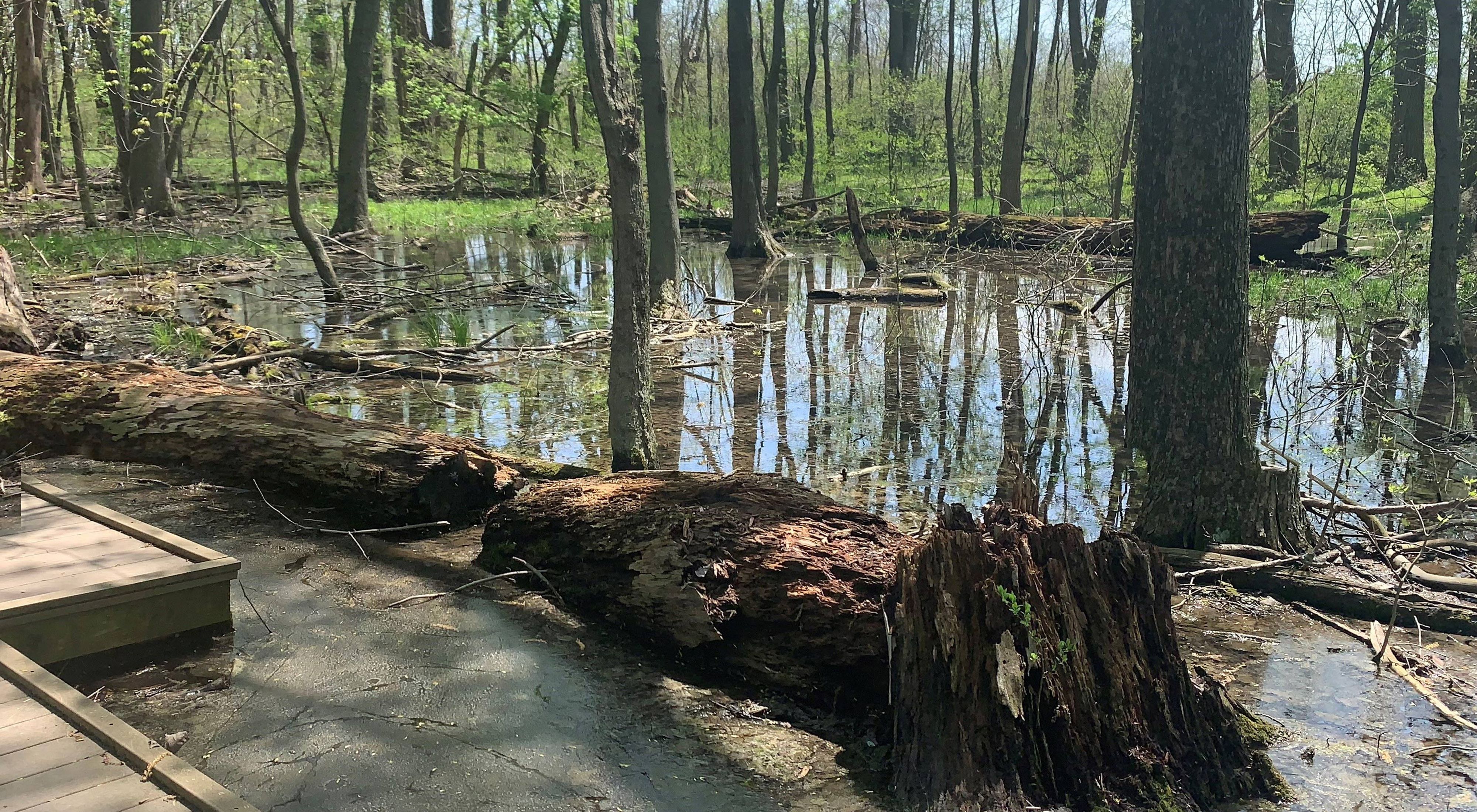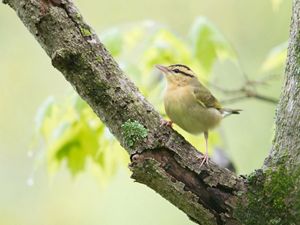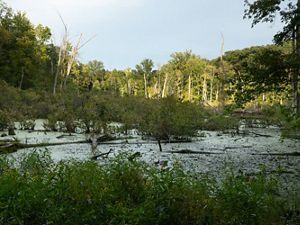Media Contacts
-
Chip Sutton
The Nature Conservancy
Phone: 317.829.3915
Email: csutton@tnc.org
Written by Larry Clemens and Bob Barr
Central Indiana residents likely don’t realize it, but there’s a natural area just north of 96th Street working around the clock to help with flood control.
Ritchey Woods Nature Preserve, owned and managed by the City of Fishers, is 127 acres of diverse nature. The park is filled with amenities for visitors, including trails and picnic tables. The trails take visitors by wet areas of all shapes and sizes, and that’s where some quiet wonders of nature abound.
More than 20 years ago, The Children’s Museum began work with partners to restore former agricultural land to prairie and wetland communities. These restored wetlands over time begin to mimic natural wetlands. It’s a costly process that is necessary because Indiana has lost 85 percent of its natural wetlands to development and agriculture.
Wetlands filter both groundwater and surface water runoff, store floodwaters and provide habitat for rare and endangered species. The Nature Conservancy (TNC) is dedicated to conserving wetlands because without them Indiana is a less hospitable place for people and nature. Since May is American Wetlands Month, we think it’s a good time for a reminder of wetlands’ importance and value.
Wetlands provide real financial benefits, too, according to the Indiana Department of Natural Resources. Just one acre of wetlands (less than the size of a football field) provides more than $3,500 in benefits to Hoosiers each year. Those services include water purification and storage and erosion prevention.
Without wetlands it costs more for communities to treat their drinking water. And when it comes to flooding, wetlands can store massive amounts of water that otherwise would cause worse flooding downstream. According to Purdue University, just one acre of isolated wetland one foot deep can hold 330,000 gallons of water that otherwise would flood surrounding areas. That’s enough water to fill 44 basements in average sized homes with a foot of water!
Hare Creek runs through Ritchey Woods and into Cheney Creek, which then flows into the White River. During severe rainstorms, which are becoming the norm in Indiana, millions of gallons of water that would otherwise add to flooding in the White River and nearby neighborhoods are held in the wetlands at Ritchey Woods.
Wetlands are a natural infrastructure to help reduce flooding which saves residents and their insurance companies millions in losses. The restoration work at Ritchey Woods shows what can be done but much more is needed!
But do you know what’s even better than a restored wetland? A natural one! Without question, wetlands are a natural resource that we cannot afford to lose, especially in the face of more severe weather events brought on by climate change.
Indiana’s wetlands are too important to get short shrift in the General Assembly. Members heard from Hoosiers who care about clean water and good habitats when they attempted to abolish all regulations in 2021. Hoosiers can keep fighting the good fight and urge their lawmakers to help our wetlands continue to provide their important functions.
To do this, we need to make sure reasonable regulations remain in place to guide decision-making and boost funding for the Clean Water Indiana Fund to $5 million a year.
Our elected officials need to hear at every opportunity how important wetlands are to all Hoosiers. There simply is too much to lose.
Larry Clemens is state director of The Nature Conservancy’s Indiana Chapter. Bob Barr is a research scientist with IUPUI’s Center for Earth and Environmental Sciences.
The Nature Conservancy is a global conservation organization dedicated to conserving the lands and waters on which all life depends. Guided by science, we create innovative, on-the-ground solutions to our world’s toughest challenges so that nature and people can thrive together. We are tackling climate change, conserving lands, waters and oceans at an unprecedented scale, providing food and water sustainably and helping make cities more sustainable. Working in more than 70 countries and territories, we use a collaborative approach that engages local communities, governments, the private sector, and other partners. To learn more, visit nature.org or follow @nature_press on Twitter.



